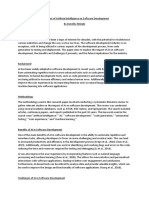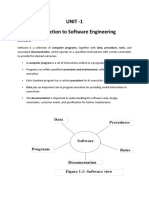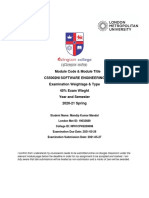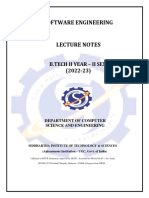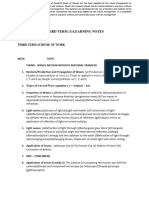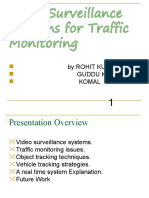0% found this document useful (0 votes)
5 views11 pagesAssignment Software Engineering
The document discusses various recent topics in software engineering, including artificial intelligence, experimental software engineering, release engineering, empirical software engineering, software product line engineering, and software engineering for AI. Each topic is explored in detail, highlighting their methodologies, advantages, disadvantages, and mathematical applications. The document emphasizes the importance of these fields in improving software development processes and outcomes.
Uploaded by
calvinmaponde23Copyright
© © All Rights Reserved
We take content rights seriously. If you suspect this is your content, claim it here.
Available Formats
Download as PDF, TXT or read online on Scribd
0% found this document useful (0 votes)
5 views11 pagesAssignment Software Engineering
The document discusses various recent topics in software engineering, including artificial intelligence, experimental software engineering, release engineering, empirical software engineering, software product line engineering, and software engineering for AI. Each topic is explored in detail, highlighting their methodologies, advantages, disadvantages, and mathematical applications. The document emphasizes the importance of these fields in improving software development processes and outcomes.
Uploaded by
calvinmaponde23Copyright
© © All Rights Reserved
We take content rights seriously. If you suspect this is your content, claim it here.
Available Formats
Download as PDF, TXT or read online on Scribd
/ 11









